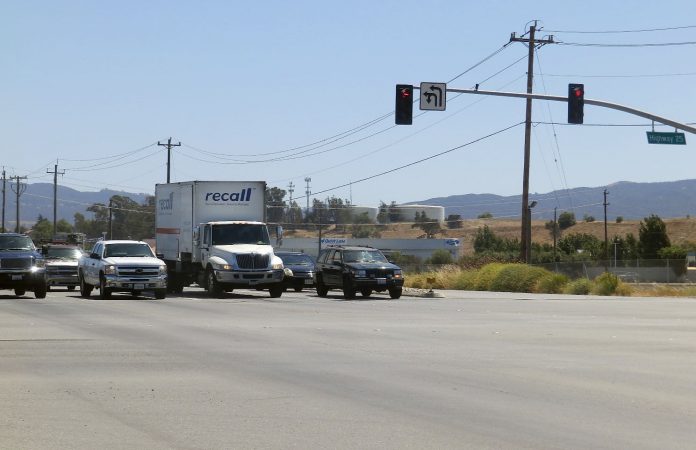Hollister council members Monday OK’d a set of significant increases to traffic impact fees for developers to pay for new roads, although builders of commercial and industrial sites could get a financial break through individual tax agreements.
San Benito County and San Juan Bautista already approved their versions of the countywide hikes to fees charged to developers for new construction, meant to pay for costs of new roads. The amended fees, which aim to help fund projects such as a Highway 25 expansion and growth to local city and rural roads, will take effect in July.
The new revenue could combine with a proposed half-cent sales-tax increase to potentially generate more than $400 million going specifically toward road construction and repairs throughout San Benito County over the next three decades.
The basic concept with traffic impact fees is that new developments will prompt the need for new roadways in order to accommodate all those additional drivers. The local jurisdictions commissioned a consultant, the Michael Baker International firm, to conduct a nexus study that links each dollar amount to a specific share of infrastructure costs.
Builders will take a direct hit, while local homeowners or renters should theoretically absorb a trickle-down effect as well.
The new impact fee for a single-family residential unit will go to $13,817 compared with $5,233 charged by the county and $5,803 charged by the City of Hollister now. That represents a 164 percent increase. The new multifamily fee is at $8,589 compared with $3,223 charged by the county and $3,574 charged by the city currently. That represents a similarly whopping hike.
At Monday’s council meeting, Councilman Karson Klauer continued his prior theme of expressing skepticism about the multifamily housing fee. Klauer has been an open proponent of encouraging more growth in the number of multifamily units since taking office last year due to a perceived shortage.
Mayor Ignacio Velazquez tried to reassure Klauer that the fee increases were needed to make sure Hollister recoups all costs. The city’s last housing boom, in the late 90s and early 2000s, ended with a 15-million-gallon sewer spill into the San Benito River bed, which most local observers attributed to inadequate wastewater infrastructure. The resulting, state-imposed building moratorium crippled the local economy and spilled into the Great Recession.
“What we’re really trying to do here is make sure that we don’t fall short in the future,” Velazquez said Monday.










